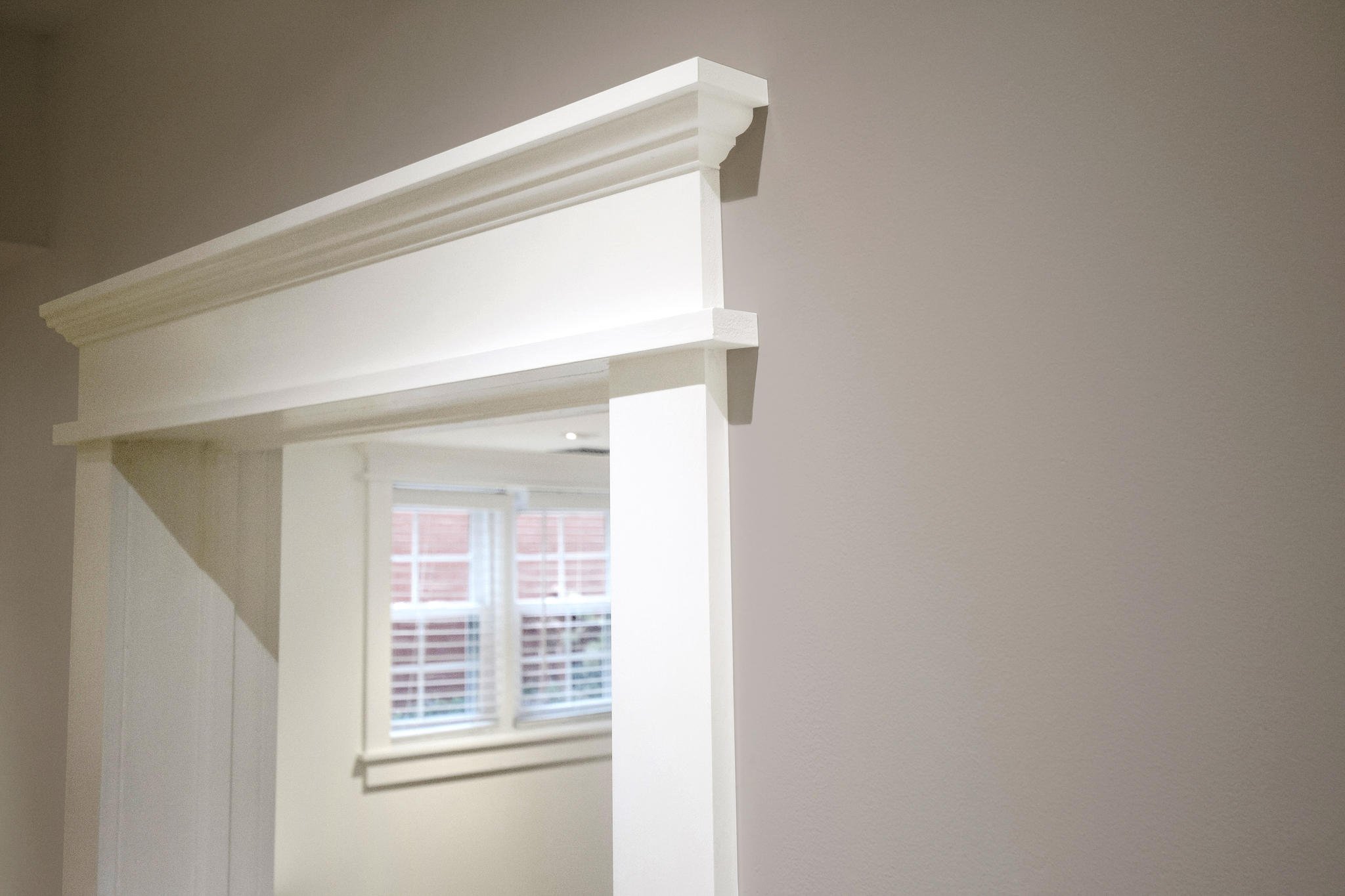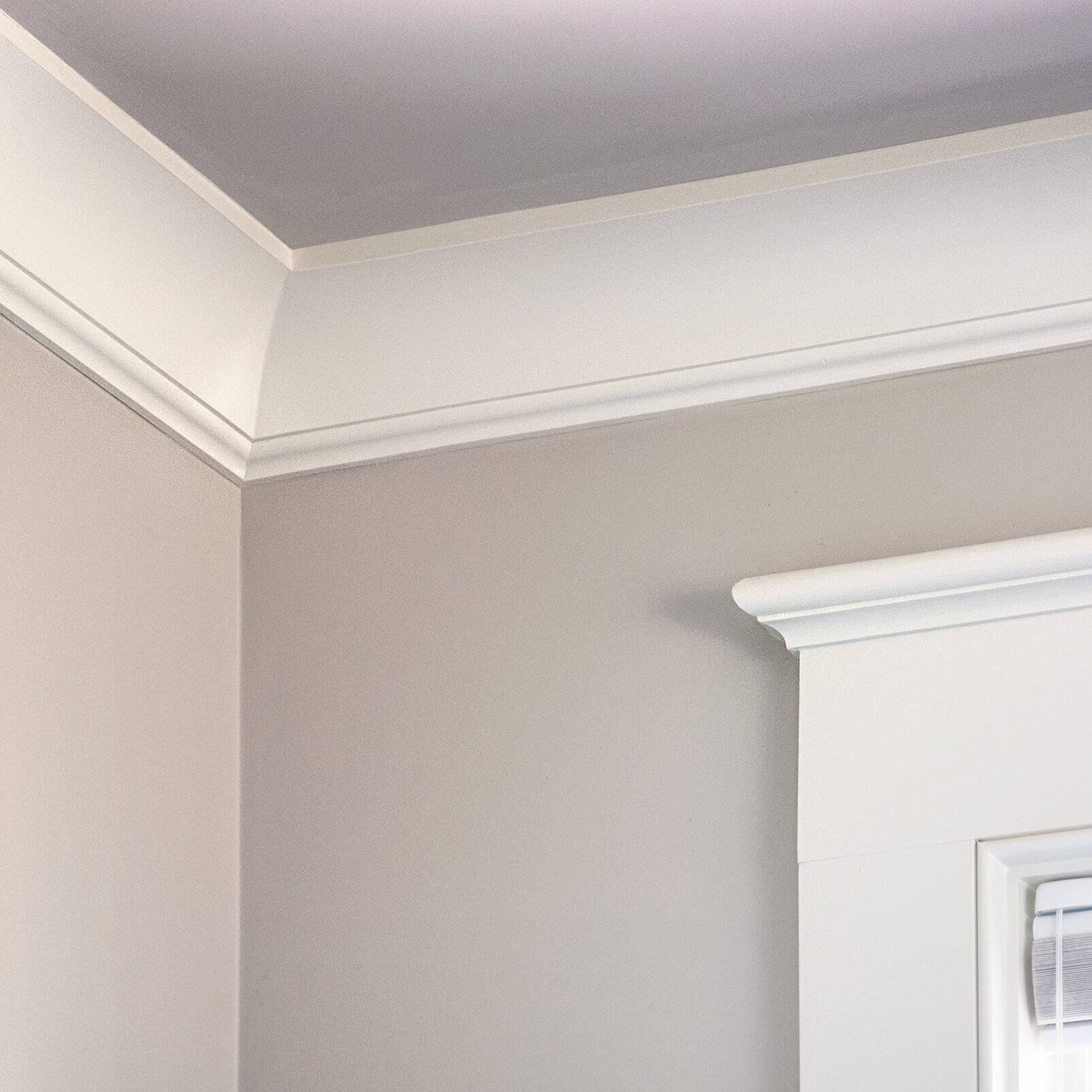It’s All About The Trim
Trim can be used to complement your existing décor or create a whole new look for your home. Whether you prefer a traditional or modern design, there are affordable and easy-to-use trim options to update your home and add a personal touch to your walls, floors, and other interior spaces. But, regardless of design choices, trim work installations should always be held to a high level of standards. Cobb Brothers Company is happy to provide you with the expertise and service you want to complete any of your finished carpentry needs. Below are a few trim projects we can help you with.
Door and Window Casings
Casings create a decorative finish at doors and windows, and it can also help tie different architectural elements together to develop a cohesive style within a room. This trim also serves a practical purpose by concealing unsightly gaps around door and window frames. It may even help mask small flaws in the drywall that can occur when retrofitting doors and windows.
Doors are often trimmed with thin columns known as pilasters, though more basic trim designs are also available.
Baseboards
Baseboards are a very common type of trim found along the bottom portion of a wall. They typically have a flat bottom to allow the boards to sit flush against the floor, though the top of each unit can be rounded or flat. Baseboards help protect the base of the wall from damage while concealing floor expansion joints or gaps between the wall and floor.
Crown Molding
Crown molding is a very popular trim material that's typically installed along the top 2 to 12 inches of a wall. It's used to provide a visual transition between walls and ceilings, while helping set the style and décor of the room. Crown molding can also conceal drywall or plaster flaws at hard-to-finish corners and joints, and it may also hide wiring used for lighting and speakers.
Pillars and …
Pilasters
Essentially, the difference between a pillar and pilaster is that pillar is a large post, often used as supporting architecture while pilaster is a rectangular column that projects partially from the wall to which it attached; it gives the appearance of a support, but is only for decoration. In the past, columns were used in home building to provide structural support to ceilings. Today, pillars are added as a decorative option when you want to highlight a space or can be used to frame a fireplace, doorway or other opening.
Mantle Moldings
.
A mantel is an architectural element that often acts as a focal point within a room. The fireplace is the centerpiece of many living rooms, and updating it can seem daunting. But you can change up your dated fireplace with trim molding under the mantel and around the tile for a fresh new look! While some mantels may be used to frame a fireplace, others are independent units that serve a purely decorative function. Most mantels are surrounded by molding or trim to create a finished appearance or to contribute to the room's décor.
Stairs and Stringers
Stringers are large, flat panels that range from 1 to 2 feet in height. They're installed along the joint between the stairs and the wall and typically run at the same angle as the staircase. The top and bottom of each panel may be finished with decorative molding, or it can be left unfinished for a simpler look. While stringers are mostly used for aesthetic purposes, they can also provide some structural support for older staircases.
Picture Rail
The term "picture rail" refers to a thin piece of horizontal molding that usually sits about 12 to 20 inches below the ceiling in a room. Originally, picture rails were designed for use on plaster walls so that you did not have to damage your wall (or wall coverings) to hang artwork. Depending on the style of the room, picture rail can be used alone or combined with crown molding and other trim units. Square or rounded picture rail is the most common.
Friezes
The frieze of a room is the section of the wall above the picture rail and under the crown moldings or cornice. By extension, a frieze is a long stretch of painted, sculpted, or even calligraphic decoration in such a position, normally above eye level. Some modern design schemes may incorporate a solo frieze without any other complementary trims to add an understated decorative element to a room. This is especially true with salvaged or antique tin frieze panels, which can be painted or left unfinished.
Chair Rail
Chair rail is a type of trim that's installed horizontally along a wall between 2 and 4 feet from the floor. It was primarily used to protect the wall from scratches and dents caused by impacts with chairs but today, the purpose of a chair rail is to add visually pleasing architectural interest to any room and can be placed at whatever height you prefer. It may be used alone or in combination with other types of trim, such as wainscoting or baseboards.
Wainscoting
Wainscoting is a type of trim that uses large panels to cover the lower half of a wall. These panels may be used alone or between baseboards and chair rails. This trim helps protect walls from damage while providing a decorative finish. Modern wainscoting made from vinyl or plastic is even used in bathrooms and kitchens to minimize water damage.
Wainscoting can be installed using a variety of materials and techniques to satisfy your creative vision. Raised profile panels made from wood help add texture and depth to a wall. Tongue-and-groove wooden paneling is made from individual wooden planks for a mid-century look. Simple flat panels can be painted or stained to add color, while maintaining a smooth wall surface that works with almost any décor. For an affordable alternative, homeowners can use a shadow box technique to mimic the look of wainscoting. This method uses thin units of trim to frame boxes or panels directly on the drywall or plaster wall surface. It's easy to install and affordable because no full panels are required.
Whether your carpentry job is large or small, residential or commercial, Cobb Brothers Company is your trusted carpentry partner. Call today to schedule your trim project- 508-655-7910.











